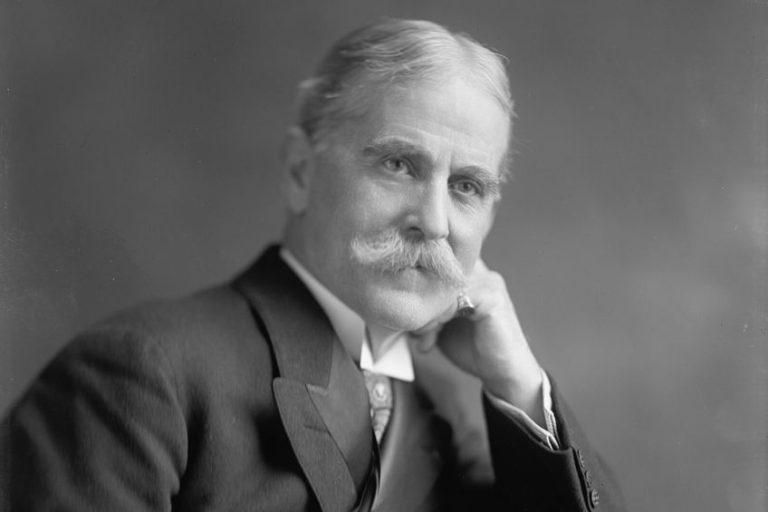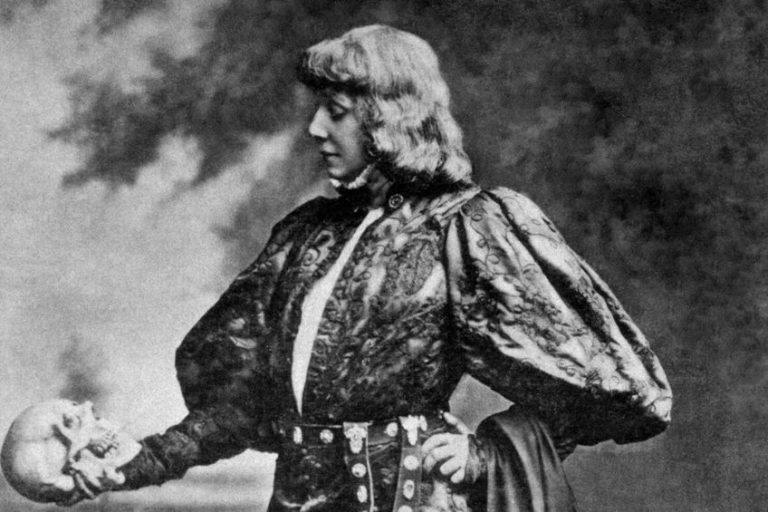“Annabel Lee” Poem by Edgar Allan Poe – A Detailed Analysis
The last thing that someone wrote can be a rather fascinating thing to examine, but why is that the case? Today, I will be having a look at the work of Edgar Allan Poe, but specifically at the last complete poem that he wrote. I will provide you with a discussion of the man behind the poem, an in-depth Annabel Lee poem by Edgar Allan Poe analysis, a brief discussion of some of the primary themes that were explored, and a quick look at this text as the final one that he ever wrote. Learning about things like this can be rather fascinating, and if you agree with a prognosis such as that, then read on to learn more!
Table of Contents
- 1 Annabel Lee Poem by Edgar Allan Poe
- 2 Annabel Lee Poem by Edgar Allan Poe Summary Points
- 3 Biography of Edgar Allan Poe
- 4 An In-Depth Analysis of the Annabel Lee Poem by Edgar Allan Poe
- 5 The Themes of the Annabel Lee Poem by Edgar Allan Poe
- 6 Annabel Lee As Edgar Allan Poe’s Final Complete Poem
- 7 Frequently Asked Questions
Annabel Lee Poem by Edgar Allan Poe
| Date Published | 1849 |
| Type of Poem | Lyrical narrative ballad |
| Rhyme Scheme | Variable |
| Meter | Variable |
| Topic | Death of a young woman |
The Annabel Lee poem by Edgar Allan Poe is the very last poem that Poe ever finished, and it was published only two days after his death. This has given it a certain special place in the oeuvre of Poe’s works, and it is also why I will be having a look at it today. However, before we do get to the analysis itself, we’ll first stop for a few moments so that we can get a nice overview of things to come!

Annabel Lee Poem by Edgar Allan Poe Summary Points
There are many different Edgar Allan Poe poems, but Annabel Lee is a special one in many ways. We will be getting into a far lengthier discussion of the poem, but before we get into that proper analysis, it can be helpful to have a few summarized pointers:
- Annabel Lee is about the death of a young woman. Many of the famous poems of Edgar Allan Poe have to do with death and especially the death of a young woman. This likely came from a personal place as his wife (and cousin) died at a young age and had a major impact on him throughout his life. This poem is a phenomenal entry into this recurring theme.
- Annabel Lee uses a complex rhyme scheme. When it comes to the question of, “What type of poem is Annabel Lee?”, we cannot easily determine it through its use of rhyme. That is because it has a highly individualized and variable rhyme scheme. There is repetition of one particular sound throughout every single stanza, but, other than that, the rhyme scheme differs in each and every stanza.
- Annabel Lee was the final poem of Edgar Allan Poe. This particular poem would come to be the very last poem that Poe ever composed, but it was very likely not intended as such. He died at the age of 40 and in very mysterious circumstances. However, as the final poem by one of the most influential writers of the 19th century, this poem has come to be seen as important in Poe’s work.
This marks the end of our brief summary of the Annabel Lee poem by Edgar Allan Poe discussion that we will have below, but with the summary somewhat counterintuitively now done, we can jump into the actual discussion. We’ll start that discussion by instead looking at the person behind the poem rather than the poem itself.
So, let’s do that!
Biography of Edgar Allan Poe
| Poetic Movement | American Romanticism and Gothic poetry |
| Years | 1809 – 1849 |
| Place of Birth | Boston, Massachusetts, United States |
| Known For |
|
Edgar Allan Poe was an American writer. He was known to work in many different genres and literary mediums, such as prose, poetry, and literary criticism. His work fell into the realm of American Romanticism and Gothic literature, but he has come to be seen as one of the major figures in Gothic literature more so than Romanticism itself. His poetry tends to be dark and melancholic in tone, and his stories are macabre and mysterious. One of his greatest contributions was also that he is seen as the originator of the detective genre in fiction.

He was known as a savage critic, and after his mysterious death, which saw him stumbling through the streets of Baltimore, United States, while delirious. He collapsed and died there. After his death, a rival published a scathing obituary full of falsehoods about Poe’s life and character that painted him as a madman, and that aided in fueling speculation about his work. The obituary was later found to be full of lies, but those lies also succeeded in elevating Poe as a writer and he found a new audience. He has remained popular despite the lies being exactly that, lies.
An In-Depth Analysis of the Annabel Lee Poem by Edgar Allan Poe
Before I dive into my analysis of the Annabel Lee poem by Edgar Allan Poe, there are a few points that should be discussed first, seeing as they are rather important to the overall poem’s form and structure. Firstly, what type of poem is Annabel Lee? Well, this poem is a lyrical narrative ballad. This essentially means that it tells a story while adopting a more emotional perspective and a certain music-like structure. The narrative in question is about the death of a young woman, but if you’re familiar with Edgar Allan Poe then that may not come as much of a surprise as death, especially of a young woman, was something he constantly re-explored, likely because of the personal experiences he had with losing his young wife (and cousin).
In terms of being a ballad, this can be seen in the way that the poem is structured.
The stanzas do sometimes vary in length, but they tend to have a very similar rhyme scheme. While the rhyme scheme of the Annabel Lee poem by Edgar Allan Poe is not stable, it does have certain mainstays in each stanza. For instance, the first stanza has the rhyme scheme ABABCB. You can see that there is consistent repetition of the B rhyme, and this persists into the second stanza. That second stanza makes use of a DBEBFB. Essentially, none of the odd-numbered lines rhyme with one another, but there is still that B repetition.

This constant use of repetition of just one rhyme throughout every single stanza of the poem gives it a very distinctive flow that is unlike many other poems. One can imagine this particular poem even being set to music because of that kind of musicality on display. In addition, because the B rhyme is the one that rhymes with the “Lee” part of Annabel Lee, it consistently reinforces the speaker’s grief at having lost this person. So, the rhyme acts as a powerful means of repetitively producing a rhythm, and it also reinforces the theme of loss and sadness that the speaker feels. The rhyme also operates alongside a constantly changing metrical structure that gives it a certain depth that is particularly musical.
Stanza One
It was many and many a year ago,
In a kingdom by the sea,
That a maiden there lived whom you may know
By the name of Annabel Lee;
And this maiden she lived with no other thought
Than to love and be loved by me.
The poem opens in a very interesting way. It reads like a fairy tale. It even makes use of the idea of “many and many a year ago”, which reads like “once upon a time”. We can see, from this opening, that the speaker has created a more idealized version of the figure of Annabel Lee for us to ponder. The use of the term “maiden” to describe her adds to this more fantastical setting and allows us to see her as a damsel in a far-off place.
The use of the term “kingdom by the sea” also adds to this more fantasy-inspired setting. It is meant to be magical and different and does not necessarily have any particular connection to our world.
As an instance of pure, unfettered love, we might be able to see some of this as existing within the mind of the speaker. He has transformed his love of this woman into a far deeper thing which could have been found in the ancient storybooks and the tales of swords and knights. The final two lines further solidify this more unrealistic and simplistic portrayal by stating that she only lived to love the speaker.
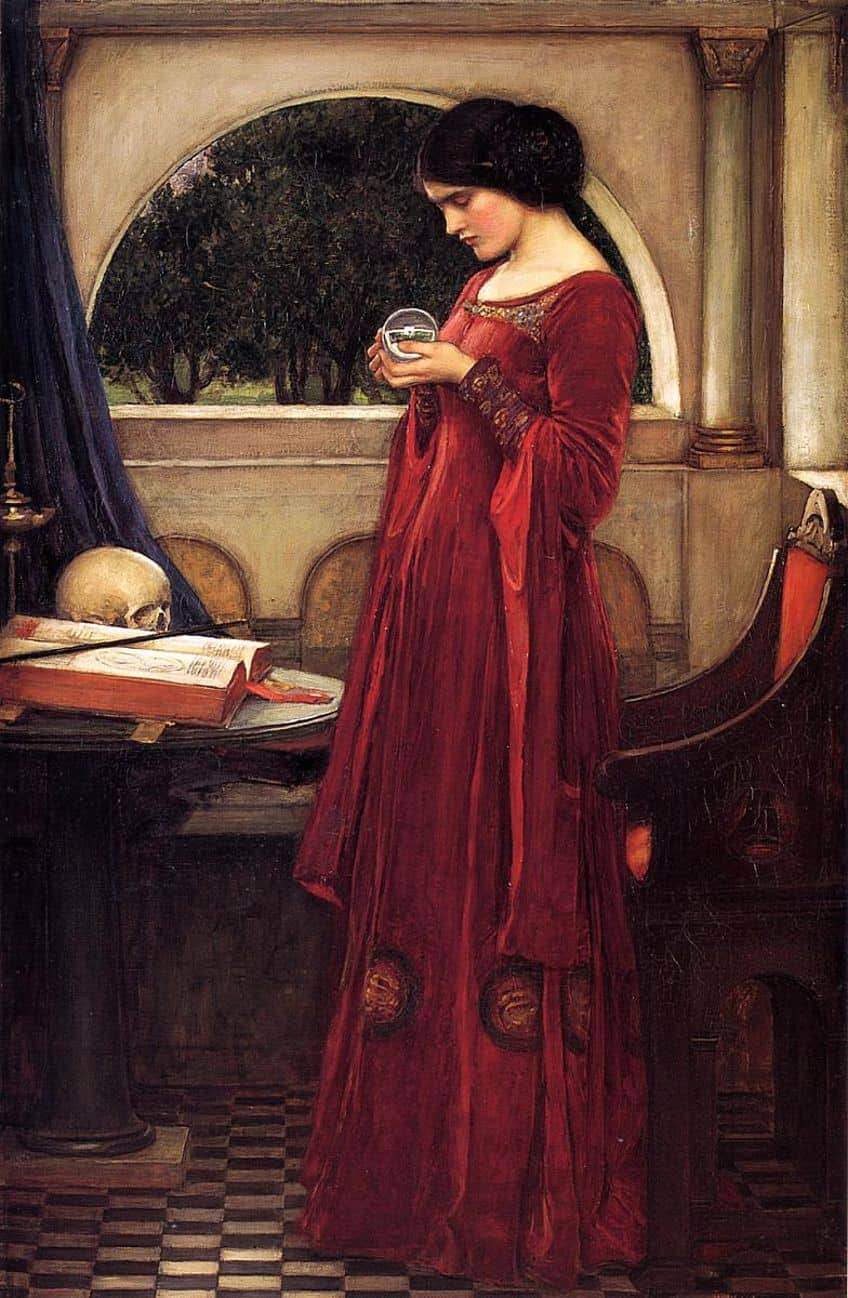
Stanza Two
I was a child and she was a child,
In this kingdom by the sea,
But we loved with a love that was more than love—
I and my Annabel Lee—
With a love that the wingèd seraphs of Heaven
Coveted her and me.
The second stanza serves as a continuation of the more fantastical setting. It opens by telling us that the speaker and his beloved were both children when they fell in love with one another, and we are, once again, reminded of where this poem takes place. We are in this “kingdom by the sea”. The fantasy of the last two lines brings us in touch with the supernatural and the divine.
The seraphs, which are angels, are portrayed as having certain covetous feelings toward Annabel Lee. Even the immortal creatures of heaven want someone like her.
Before we proceed, I’d like to go back to the third line for a moment. This line does not reinforce the fantasy setting as the other lines do, but it does do something rather interesting. The thing it does is use the word “love” on three separate occasions. It wants us to understand that the love the speaker and Annabel Lee felt for one another was stronger and purer than anything else that could possibly exist in the world. We have to understand, from the speaker’s perspective, that Annabel Lee was the most important person in his world.

Stanza Three
And this was the reason that, long ago,
In this kingdom by the sea,
A wind blew out of a cloud, chilling
My beautiful Annabel Lee;
So that her highborn kinsmen came
And bore her away from me,
To shut her up in a sepulchre
In this kingdom by the sea.
The dark turn of the narrative begins in this stanza. The first few lines tell us that a “chilling” wind blew through one day and connected with Annabel Lee. The remainder of the stanza simply describes what happens to her as a result. It does not use the word “death” or “dying”, but instead that her family took her away from the speaker and laid her to rest in a tomb. She did not leave the “kingdom by the sea” in physical terms, as her body was placed within the kingdom, but she has still been taken away from the speaker, or at least this is how the speaker feels when it states that her family “bore her away from me”. You can feel the sense of blame and anger that comes from the speaker as a result of all of this.
He never wanted her to perish, but when she did pass away, he did not allow it to be something he could forgive.
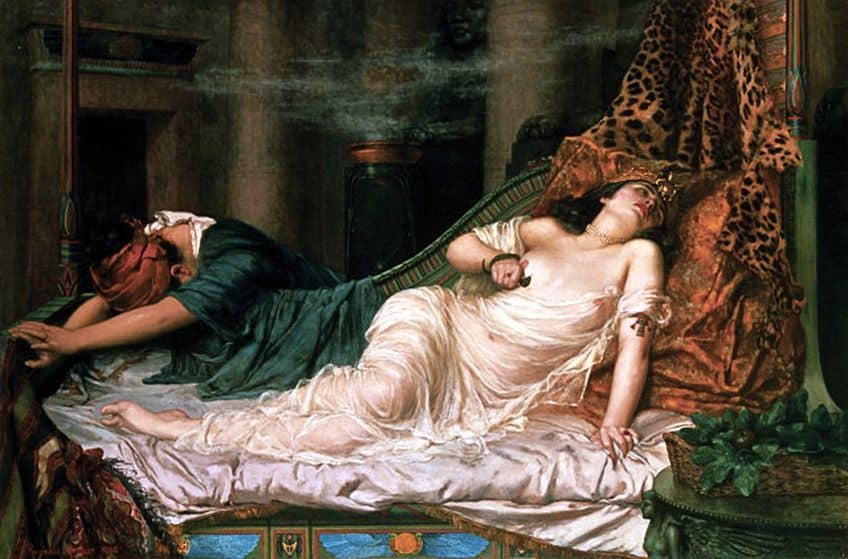
Stanza Four
The angels, not half so happy in Heaven,
Went envying her and me—
Yes!—that was the reason (as all men know,
In this kingdom by the sea)
That the wind came out of the cloud by night,
Chilling and killing my Annabel Lee.
The fourth stanza of the Annabel Lee poem by Edgar Allan Poe lays the blame for things. It was the fault of the angels. They had been envious of her, as has already been established, and the speaker reiterates that everyone around knew that he and Annabel Lee loved one another. They were all aware of this fact! And the wind that killed her was nothing natural, but something sent from heaven itself. The implication is that Annabel Lee was such a perfect thing that the angels themselves wanted to bring her to heaven.
They wished to wrench her from her mortal lover.
This is a fantastic stanza for showing us the way that we might blame everyone, even those that either do not exist or have no bearing on our mortal lives (depending on your own perspective) when it was just a natural event that crept through the world and took Annabel Lee from existence. We need someone to blame for what happens to us, and the divine is a rather convenient enemy.
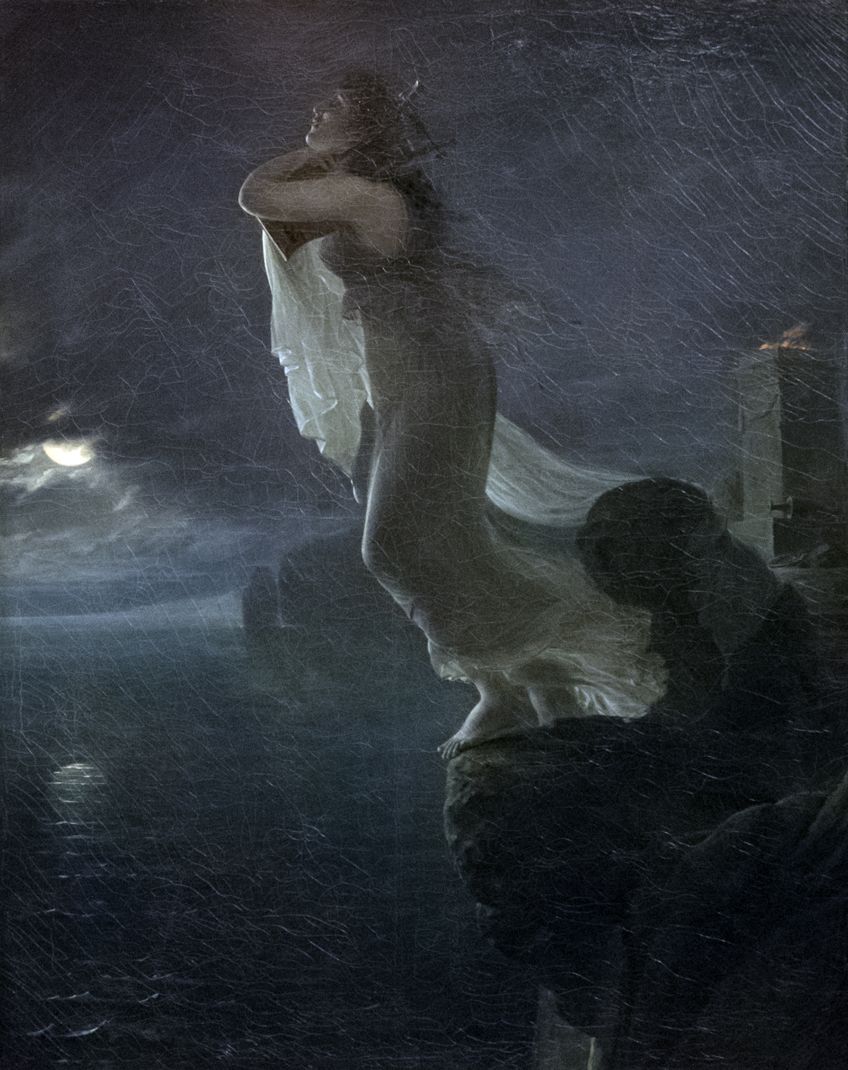
Stanza Five
But our love it was stronger by far than the love
Of those who were older than we—
Of many far wiser than we—
And neither the angels in Heaven above
Nor the demons down under the sea
Can ever dissever my soul from the soul
Of the beautiful Annabel Lee;
The second last stanza in the Annabel Lee poem by Edgar Allan Poe serves as a form of reaffirmation. The blame has been laid at the feet of the angels, but this stanza reiterates that regardless of everyone else, those who may have been older or wiser, those who were in heaven, or even those who were in hell, the speaker and Annabel Lee were in deep love with one another. The speaker uses the concept of the soul, and being soul mates, to indicate that even though Annabel Lee is dead, their souls are forever intertwined.
He will see her again.

Stanza Six
For the moon never beams, without bringing me dreams
Of the beautiful Annabel Lee;
And the stars never rise, but I feel the bright eyes
Of the beautiful Annabel Lee;
And so, all the night-tide, I lie down by the side
Of my darling—my darling—my life and my bride,
In her sepulchre there by the sea—
In her tomb by the sounding sea.
The final stanza brings with us immense grief. The speaker cannot sleep without dreaming of her, the stars themselves become like her bright eyes, and so he lays down beside her every night. He lies with his beloved even though she has departed from this mortal plane for good. The poem ultimately ends by reminding us of where she is. She is entombed by the sea, and she has perished for all time within our physical world, but the poem’s constant use of more spiritual language tells us that they will likely be reunited at some point in the future, even if the place in which they are reunited requires him to live his life and pass away too.
This has been my short analysis of the Annabel Lee poem by Edgar Allan Poe.
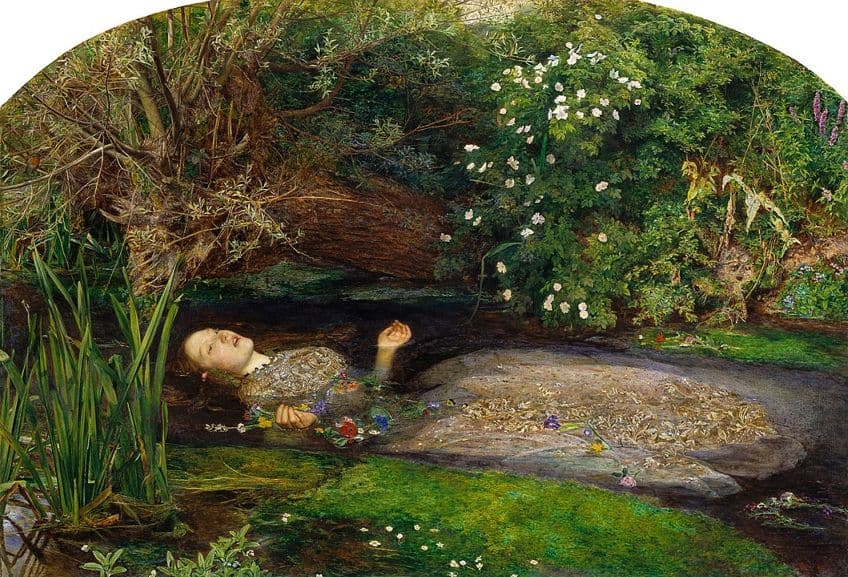
The Themes of the Annabel Lee Poem by Edgar Allan Poe
The principal themes of the Annabel Lee poem by Edgar Allan Poe have to do with love and loss. The speaker in the poem has an immense amount of love and adoration for the character of Annabel Lee, but she has passed away, and so now the speaker experiences a sense of loss in her absence from the world. However, despite fixating on the way that grief can invade our bodies after the death of someone that we adore more than any other, we can also see it as a positive because of the love that the speaker felt for their deceased lover.
The ephemerality of life is another of the important themes.
Life does not last forever, and it can be seen as vanishing in the blink of an eye. We may think that life is slow and trudges along, but when looking back on our decades of existence, it can seem to have gone by in the flash of an eye. Additionally, the fact that life can be taken from us at any moment is another aspect of the poem’s discussion of death. The character of Annabel Lee from the poem was young when she died, and we can see her death as especially tragic because she died far too young.
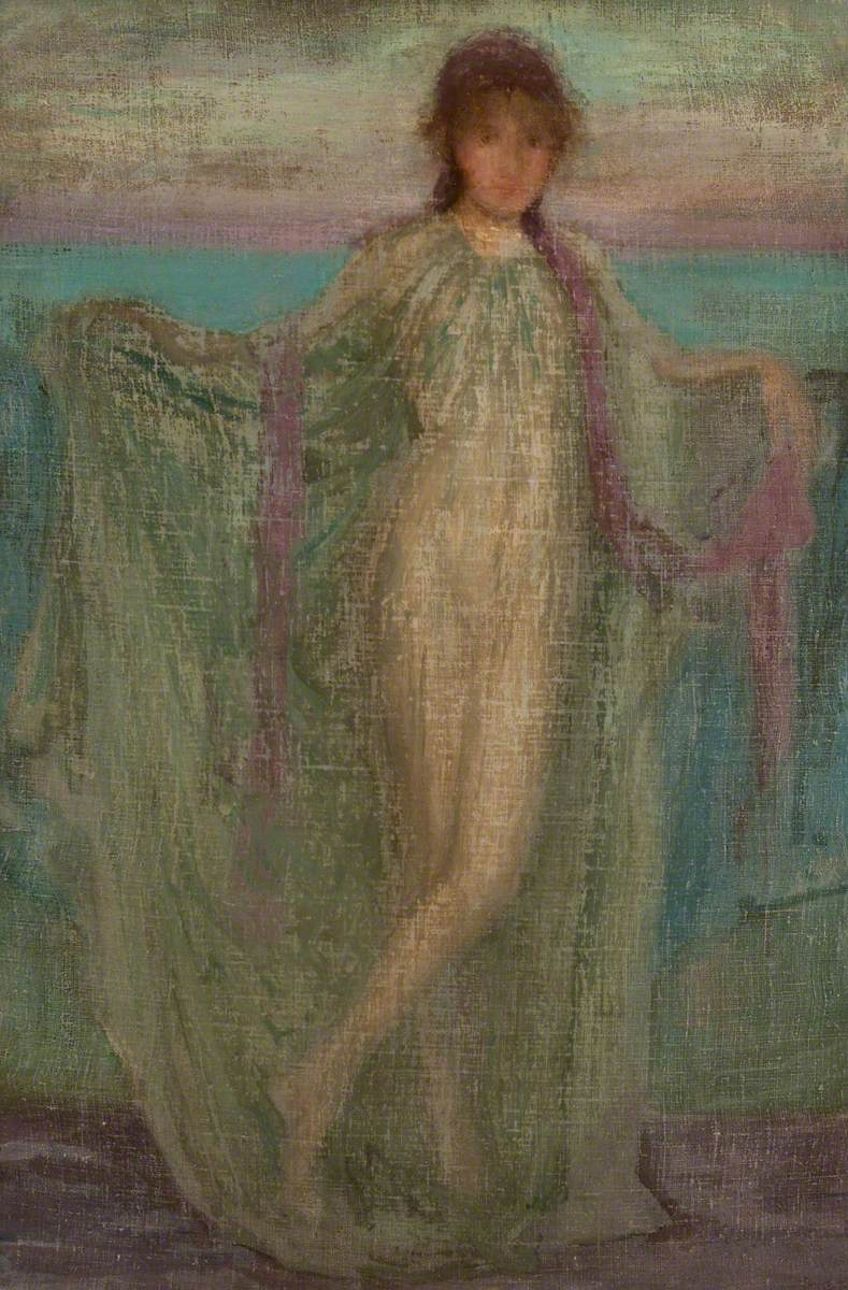
Other major points include the use of memory in the Annabel Lee poem by Edgar Allan Poe. We may lose those that we love, but they do remain in our hearts and minds. They have been taken from this world, but they have eternal life within the confines of our minds. This can also be seen as a form of idealized love as those who remain in our minds are not necessarily remembered as they are but rather as idyllic versions of themselves. The mind and our memories are not always reliable things, and the Annabel Lee poem by Edgar Allan Poe explores that reality.
Annabel Lee As Edgar Allan Poe’s Final Complete Poem
When it came to the poems that Edgar Allan Poe composed, they were often oriented around explorations of certain ideas, such as death, misery, and anguish, and through this, he has attained an audience that persists to this day. His work is dark, but the story of the man behind the darkness is often one that people fixate on. When Poe died in 1849, he was essentially at the height of his career, and the mysterious circumstances around his death, which are still not entirely known until this day, have fueled a lot of the interest in his work.
This poem was the last one that was fully composed by Poe, and it was published two days after his death.
It is very unlikely that he was expecting his death at such a young age, as most of us do not expect it, and so this final poem likely would have been published as per usual had he been alive. However, as it is the last poem that he finished, it has become one that fans and admirers of Poe have given a certain level of special status.

This final poem is seen as one of his best, and that aided in cementing his place as one of the most important figures in American Romanticism and the growing field of Gothic literature, which would see considerable influence drawn from his work over the years. We continue to adore his final words, and, hopefully, this analysis of the Annabel Lee poem by Edgar Allan Poe has shown what mastery he possessed over his chosen literary form.
The work of Edgar Allan Poe has inspired countless people since his death, and this article has attempted to give a good analysis and discussion of the Annabel Lee poem by Edgar Allan Poe. We looked over the meanings in the text, a brief biography of Poe, some of the themes in the text, and, lastly, an understanding of the poem’s place as Poe’s very last text. While there will always be more that can be said of any poem, this analysis should have given a good overview of the ideas expressed, but if you want more Poe, there are many other poems out there to check out and enjoy!
Frequently Asked Questions
What Is the Annabel Lee Poem by Edgar Allan Poe?
The Annabel Lee poem by Edgar Allan Poe was the very last poem that Poe ever completed. It was published days after his death and so has a special place as the final thing that he ever produced. The poem explores and examines the death of a young woman, which was a fairly common thing that Poe’s poems discussed. The poem is known for its strong use of emotion and rhythmic delivery.
What Type of Poem Is Annabel Lee?
When it comes to the Annabel Lee poem by Edgar Allan Poe, we can classify it as a lyrical narrative ballad. This basically means that it is a poem that tells a story from a more emotional perspective. It also makes use of certain ballad conventions, such as having a bouncy rhyme scheme and rhythm. It is often seen as an exemplary 19th-century example of the ballad structure in action.
Who Was Edgar Allan Poe?
Edgar Allan Poe is typically regarded as one of the most important and influential American writers of the 19th century. His work spanned many different genres, but he was a critic, poet, and short story writer, as well as working as an editor. He is perhaps best known for his Gothic literature as well as for being the inventor of the detective fiction genre, and so you could say that without Poe, there would be no Law and Order. His death would come to be seen as highly mysterious and has fueled speculation about the circumstances surrounding it for over a century and a half.
What Is the Rhyme Scheme of the Annabel Lee Poem by Edgar Allan Poe?
When it comes to the rhyme scheme of the Annabel Lee poem by Edgar Allan Poe, it is a rather interesting one. The reason for this is that it makes use of a variable rhyme scheme in which, for instance, the first stanza has an ABABCB scheme, while the second has a DBEBFB scheme. Each stanza has strong repetition of the B rhyme. This is a more unusual rhyme scheme but one that provides the reader with a particularly strong and persistent sense of rhythmic rhyme.
What Are Some of Edgar Allan Poe’s Most Famous Poems?
There are many phenomenal poems by Edgar Allan Poe, such as Tamerlane (1827), Alone (1829), and The Bells (1848). However, when we think of this particular writer’s poetic output, most of us immediately jump to the most famous of all Poe poems: The Raven (1845). This poem has come to be seen as one of the greatest in the Gothic literary movement. It is a truly phenomenal poem that has remained a favorite of many around the world ever since it was published to immediate popularity and acclaim.
Justin van Huyssteen is a freelance writer, novelist, and academic originally from Cape Town, South Africa. At present, he has a bachelor’s degree in English and literary theory and an honor’s degree in literary theory. He is currently working towards his master’s degree in literary theory with a focus on animal studies, critical theory, and semiotics within literature. As a novelist and freelancer, he often writes under the pen name L.C. Lupus.
Justin’s preferred literary movements include modern and postmodern literature with literary fiction and genre fiction like sci-fi, post-apocalyptic, and horror being of particular interest. His academia extends to his interest in prose and narratology. He enjoys analyzing a variety of mediums through a literary lens, such as graphic novels, film, and video games.
Justin is working for artincontext.org as an author and content writer since 2022. He is responsible for all blog posts about architecture, literature and poetry.
Learn more about Justin van Huyssteen and the Art in Context Team.
Cite this Article
Justin, van Huyssteen, ““Annabel Lee” Poem by Edgar Allan Poe – A Detailed Analysis.” Art in Context. February 15, 2024. URL: https://artincontext.org/annabel-lee-poem-by-edgar-allan-poe/
van Huyssteen, J. (2024, 15 February). “Annabel Lee” Poem by Edgar Allan Poe – A Detailed Analysis. Art in Context. https://artincontext.org/annabel-lee-poem-by-edgar-allan-poe/
van Huyssteen, Justin. ““Annabel Lee” Poem by Edgar Allan Poe – A Detailed Analysis.” Art in Context, February 15, 2024. https://artincontext.org/annabel-lee-poem-by-edgar-allan-poe/.






